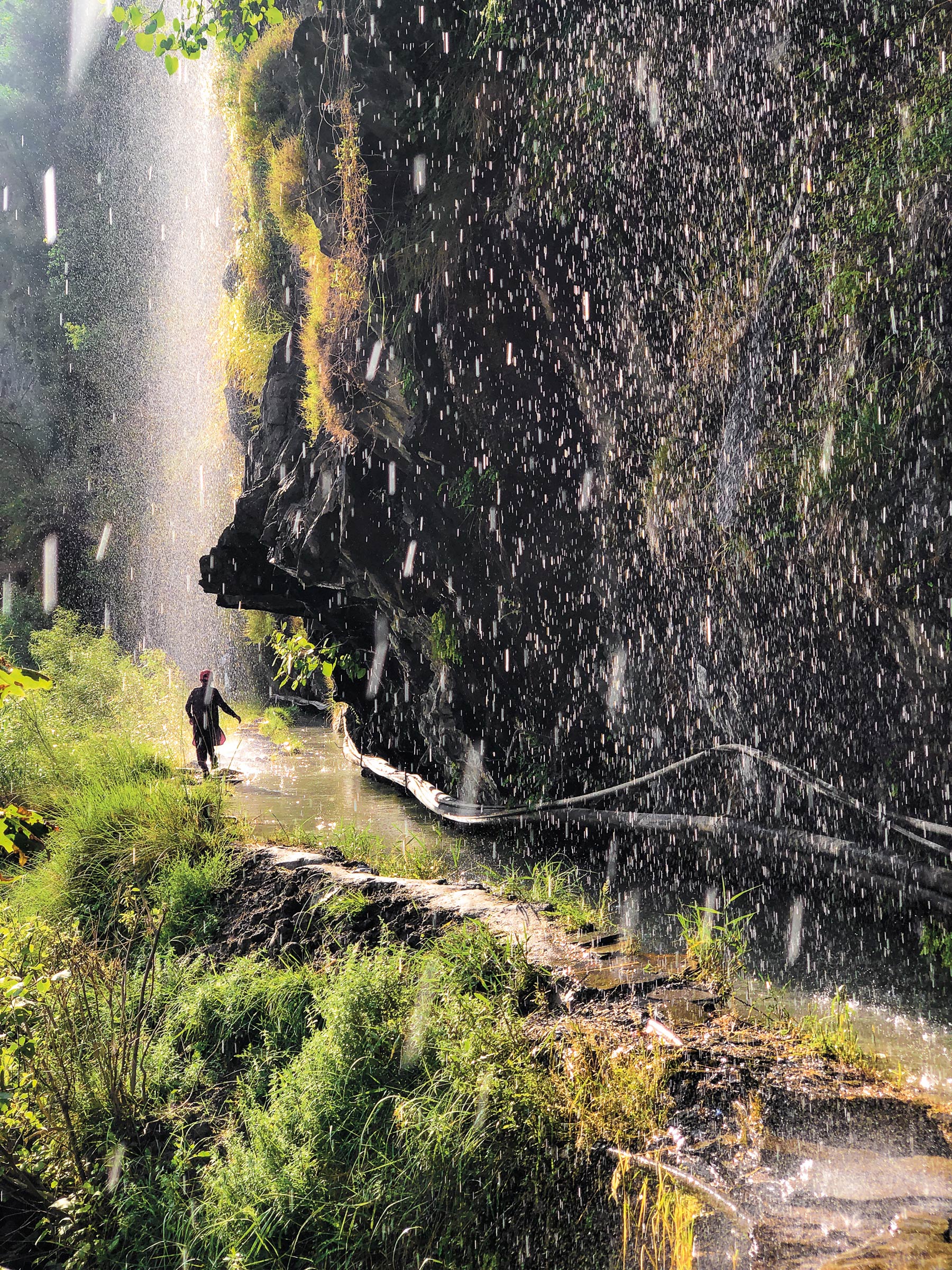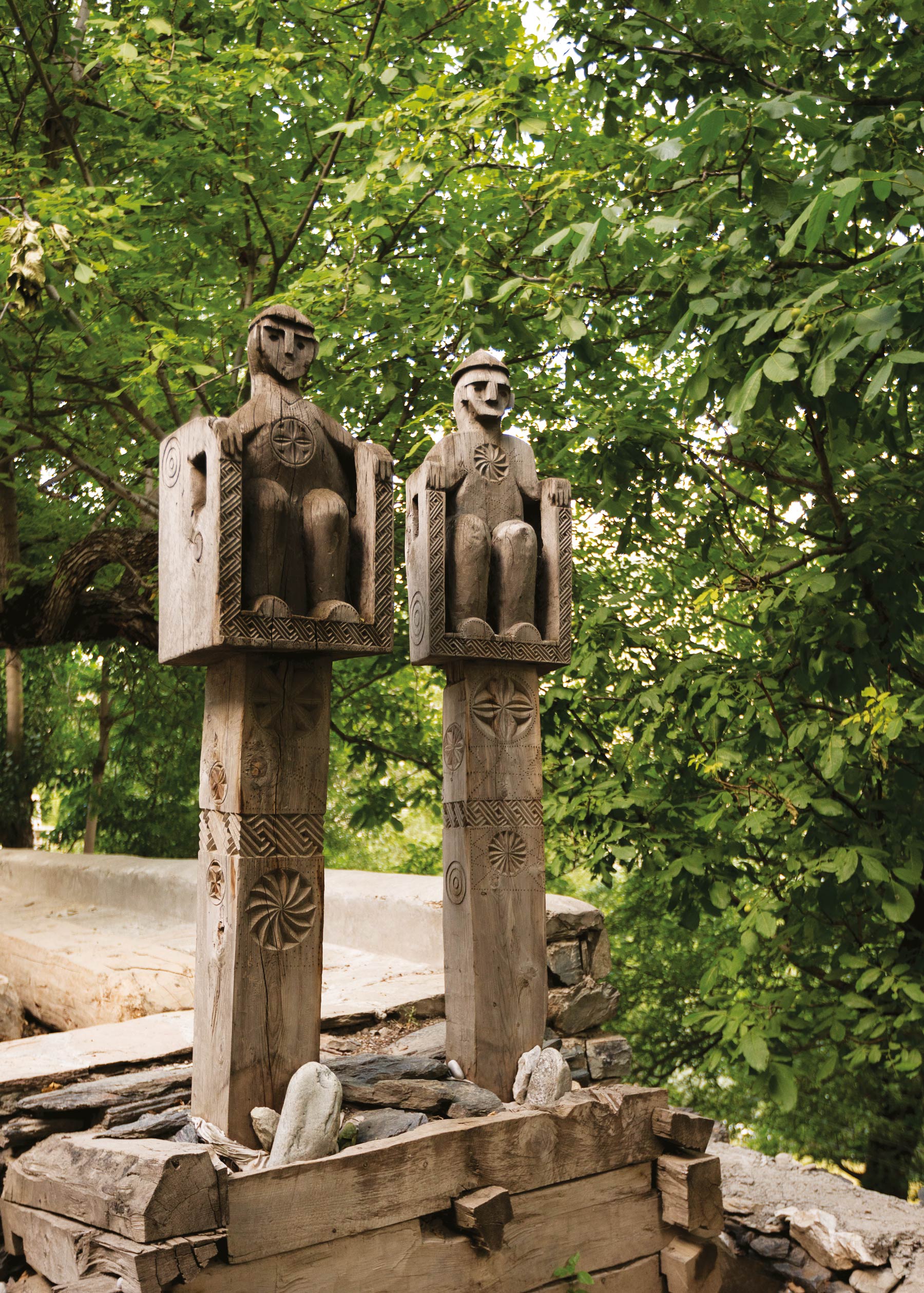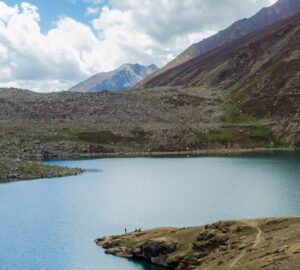Photographer and travel enthusiast, Amna Zuberi, offers a compelling guide to the valleys of Chitral and Ayun with a 360 degree take on where to stay, what to see and how to go about it all. With an insider’s perspective on how to best navigate this magical region of majestic mountains and scenic valleys, let this be your definitive summer guide
Photography: Amna Zuberi



The first visit to a new place is always a sensory overload, exhilarating, almost like venturing into another world. The second enriches you, building upon your memories as you explore more. From there on, whenever you go back, you go for the familiarity, the relationships and bonds you’ve build – with the people and the place. That’s how I would describe my relationship with the Hindukush area.
Surrounded by the Badkhshan and Nuristan area of Afghanistan in the north, forests of Dir to the south, Gilgit to its east and the narrow strip of Afghan territory, Wakhan, separating it from Tajikistan, this region is a balm for the soul.
The area with its rugged terrain, lush green meadows, valleys covered in some of the mightiest glaciers in the world constantly tugs at your heart. Memories of watching live fierce polo battles, where this king of sports, and the sport of kings is played free style at Shandur unhindered by modern rules, lure you back.
Combine all this magic with the warm and generous hospitality of the indigenous Kalash tribes, their liveliness and vibrancy lending charm to the whole experience, and you’ve got a winner destination in the princely state of Chitral.
When to visit
March to Mid June.
April is spring and blossom season
September to November
For colours of the fall.
Cultural festivals you can visit
Chilum Josh (Spring) Festival
Kalash – Second Week of May
Shandur Polo Festival
July
Uchal (Summer) Festival
Kalash – Mid August
Choimus (Winter) Festival
Kalash – Mid December
How to get there:
By Air: Two flights a week from Islamabad to Chitral, every Friday and Sunday (depending on weather conditions).
By Road: Chitral is a 10-hour drive from Islamabad. If you take the newly constructed Swat Motorway, the distance is shortened by almost 2 hours.
We chose to take the old route on our way up which is via Mardan, Malakand. It took us through open vistas of tobacco fields, the Swat river, driving further through Lower and Upper Dir, with the Punjkore river on our side, and finally through the mesmerizing massifs of Lowari.
Eat at:
For a scrumptious meal some of the best places around Batkhela and Timergara, the last leg before the Lowari tunnel, to grab a bite are:
Khurak Mahal, Batkhela: Located 5 minutes before the Motorway exit and wildly popular amongst local travellers.
Balana Inn Resturant, Timergara: You can call them in advance and you will find a hot supper awaiting your arrival. Contact details are available over the internet.
Zaiqa Mahal, Timergara
TIPS: Apart from one registration check-post at the Kalash valley entry point, the entire road stretch from Islamabad to Chitral is now free of security check-posts and vehicle registration points.
Travel Essentials
– Hiking shoes.
– Cap & sunblock.
– Insect repellent.
– Basic medication or any prescribed medication you take.
– A reusable water bottle. In the land of glaciers and fresh water streams, the best water one can have is the one from the springs.
– If you plan to stay in Kalash, take a Telenor phone network SIM. It is the only one that works there.
– A plastic bag at all times to collect your trash.
Ayun


Half an hour before the town of Chitral, next to the Kunar river is the valley of Ayun. Also known as the gate way to the Kalash valleys, this quiet small village is rich in fruit trees, fields of gold (wheat) in the month of May and shimmering rice paddy terraces in June.
Stay at Ayun Fort Inn
I discovered the Ayun Fort Inn on my second visit to Chitral. This 12-room sanctuary of rose gardens and fruit orchards at the top of the village, is the ancestral home of Maqsood ul Mulk, a member of the ruling family of Chitral and someone who knows every local by his name and every trail and trek of the Hindukush mountains like the back of his hand.
Serving on the Federal Board of Tourism, Mr Mulk is also heading the Tourist Operators Association of Pakistan. Despite his lofty credentials, he personally welcomes each and every guest who walks into the residence. Most times you find him tending to his plants.
Rare plants grow in the garden here. Sit under the Baab-e-Majnoon (Willow tree in Persian, meaning locks of the beloved). You’ll find a bit of Balochistan here too, in the ancient Ziarat Juniper growing in the garden.
As you sit here, enjoy the view of Tirich Mir – the tallest peak in the Hindukush range, catch glimpses of the charming golden oriel who rules the garden as her own, and hear the roar of the Kalash river, Ayun’s uninterrupted soundtrack.
Conveniently located, Ayun Fort Inn is an hour away from Kalash and only half an hour from Chitral. Each window here offers panoramic views of valley below, framing grape vines, pomegranate, apple and apricot trees. An ideal base for those seeking time off of the gird to enjoy the simple things in life, one of its more famous guests includes historian and writer, William Dalrymple.
The Inn is open throughout the year. For bookings and details, search the Internet because if you want to experience local hospitality to the tee, this is the place to be.
What to do
– Trails along water channels
– Walks through the village
– Fruit tasting at the orchards
– Discovering the banks of River Kunar
Kalash
The three Kalash valleys, Bumburet, Rumbur and Barir, each make for a day trip!
A 45-minute drive into the narrow valley along River Kalash gets one to the Kalash Valley(s) bridge and check post. From here Bumburet is 12km on the left and Rumbur 8km ahead on the right.
Bumburet Valley
Drive another 45 minutes along River Bumburet to reach the main villages of Batrik and Kurkal. Chilum Josh festivities draw in huge crowds to this valley each spring.
Kalasha Dur Museum

9am-12:30 & 2pm-5pm, except friday
Provides insight into the authentic Kalasha customs and lifestyle, featuring:
– A ‘real and relocated’ house dating back 250 years
– Utensils used 70 years ago
– Ancient religious figurines.
TIPS: Take the tour with the museum guide; his storytelling and deep historical knowledge paints a fascinating picture
Kalash Graveyard

The Kalashas had a unique burial ritual of leaving the coffins open. A few old coffins with skeletal remains in them can still be seen. Traditional wooden carved figurines marking the dead still stand in the Batrik graveyard.
Jestak Temple & Ceremonial Grounds, Batrik Village. This is a temple dedicated to Jestak, the protector of families and generations. It is on the ceremonial grounds next to the temple where the Chilum Josh Festival celebrations take place.
Jestek Temple & Ceremonial Grounds, Batrik Village
This is a temple dedicated to Jestek, the protector of families and generations. It is on the ceremonial grounds next to the temple where Chilum Josh Festival celebrations take place.
Where to stay
– Bamburet PTDC Motel
– Sarhad Hotel & Restaurant
– KFU Guesthouse
– Benazir Hotel



Sheikhanandeh


If you are up for a few hours of a beautiful soft hike through shady farms, groves of mulberry, apricot and walnut trees along water streams, head to Sheikhanandeh, the last village before the Nuristan-Afghanistan border, and home to a Nuristani Muslim tribe. One can see the Nuristan mountains across, which were once part of greater Kafiristan and home to the indigenous Red tribe. Sheikhanandeh, only recently opened to tourists, is serene and remains largely untouched, offering an image of Bumburet before the tourism explosion. Though a road leads to the village, the hike is highly recommended.
Birir Valley

The picturesque valley of Birir is the most isolated of the Kalasha Valleys, and home to the oldest Kalasha tribes. At a distance of less than an hour from Ayun, the settlements are scattered around the Birir river bends. Take a stroll along the river, in the villages of Guru, Grambat gol and Bishal
Rumbur Valley

As one drives along the river towards Grom, the main village of Rumbur, small isolated settlements and villages on vertical cliffs begin appearing across the river.
If you are feeling adventurous then attempt the 500 mountain steps from across the river to the village of Rawalik.
TIPS: One must take permission from the Kalasha females before photographing them.
The Kalash youth are educated, well versed in English and make for excellent guides
Try the akhrot ke roti (walnut bread) that can be available if ordered in advance.
Chitral
At a distance of 30 minutes from Ayun, is the main city of Chitral. Surrounded by mountains on all side, the settlements wind along the bends of the river.
Shahi Masjid, Chitral

Built in 1924 by in Shuja ul Mulk, the Mehtar of Chitral, its intricately worked pink and white domes and minarets are styled in the traditions of Mughal architecture.
Shahi Qila, Chitral

At the western banks of River Chitral stands the 18th century Shahi Qila, once the seat of power, which today serves as the private residence of the ceremonial Mehtar of Chitral. Old canons stand guard at the entrance courtyard.
Walk through the fort gardens along the River Chitral banks in the direction of the mosque, you’ll be able to see some tall ancient Chinar trees.
Visiting Hours: Fri-Sun 3:00-5:00pm.
Shahi Bazaar
If you are looking to buy traditional accessories like the Chitrali cap, pakol, or to buy Chitrali patti, waistcoats or long coats made of pure woollen fabric also known as shu in Khowar language, Shahi Bazaar would be the place to go to.
Chitral Gol National Park,Birmoghlasht

An hour’s drive from Chitral city and an hour and half’s drive from Ayun is the Chitral Gol National Park. A biosphere reserve, it is spread over 3 valleys and several glaciers and streams.
The Park serves as a sanctuary to the endangered Markhors, Siberian Ibex, Asian Black Bears, Tibetan Wolves and a number of bird species including the Golden Eagle and the Himalayan Vulture, to name a few.
Drive to the rangers’ hut and head to the observation point. The rangers assist at all times to locate Markhors deep in the valley below, with the telescope installed there. If you are lucky you’ll be able to steal a glimpse of this shy graceful animal.
A number of trails leading from the rangers’ hut make for great exploratory walks of a few hours,
exposing one to the wilderness and fauna of the park. As one walks one can see ancient Deodar trees.
For the serious trekker, over night or longer treks leading to other valleys also start from here. A trek from the park leads to Rumbur valley also. You can find out more from local guides and rangers who can assist in organizing it.
Stop by the Summer Palace on your way in or out of the park. Though in ruins, its structure is reminiscent of its past glory.
Where to stay
Hindukush Heights: With arresting views of the Chitral valley and the Hindukush mountains, HKH is one of the finest luxury hotels in the country. Amongst its most famous international guests are Robert DeNiro, Michael Palin and Ben Goldsmith.
Pamir River Inn: For budget lodging, yet a peaceful relaxing place, Pamir River Inn along the banks of river Chitral offers comfortable and clean
accommodation. Centrally located, it is close to the fort, yet at a distance from the hustle and bustle of the bazaar and city life.
Tirich Mir View Hotel: As the name says, the balconies of the Tirich Mir View Hotel rooms offer panoramic views of the majestic peak. Ideally located at the edge of the Shahi Bazaar, both the fort and mosque are a 5-minute walk from the hotel.
If you have the right contacts, the Chitral Scout Mess is simply a beautiful place to stay.
Where to eat
Fokker Friendship Restaurant: In 2004, a PIA fokker plane crash landed at Chitral airport. It was written off by the authorities and later acquired by Shahzada Siraj ul Mulk. In 2018, a cafe opened up in a lovely garden surrounding the site of the grounded plane. For an atmospheric experience and delectable local cuisine, this restaurant is a definite visit when in Chitral.
TIPS: Hire a local guide for an authentic and enriching experience.
Buy local, eat local. Chitral is the land of fruit orchards. Locally dried mulberries and apricots are a must!
If are looking to rent transport to move around the valley, cars and 4×4’s can be rented on per day bases. In Chitral, anyone can guide you to a number of transporters; while in Ayun, just ask the Inn staff and they’ll arrange a car from the village below.






